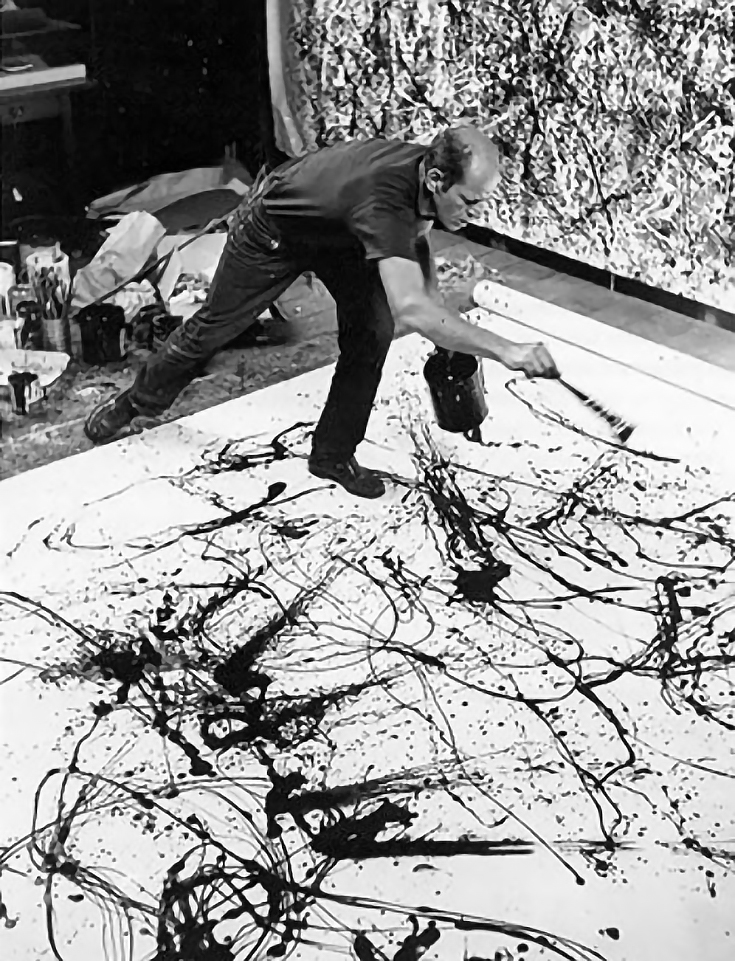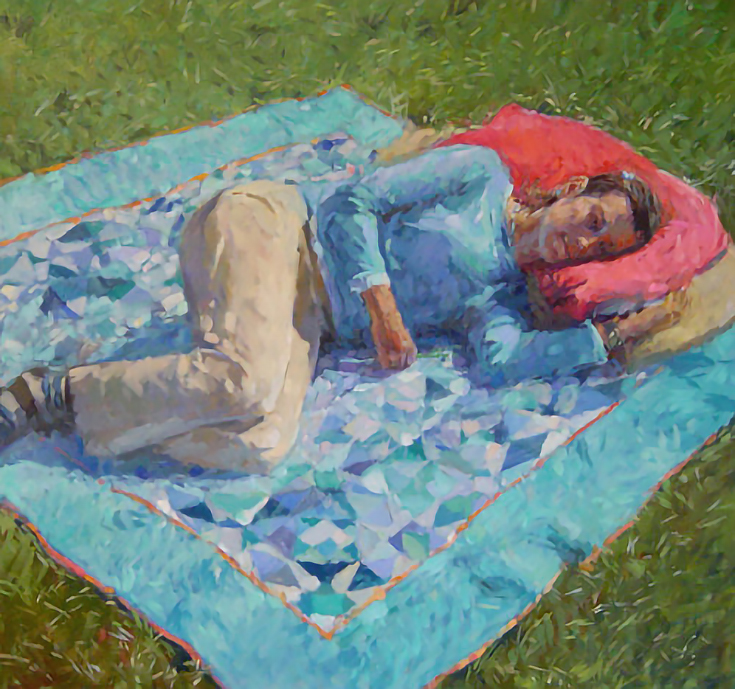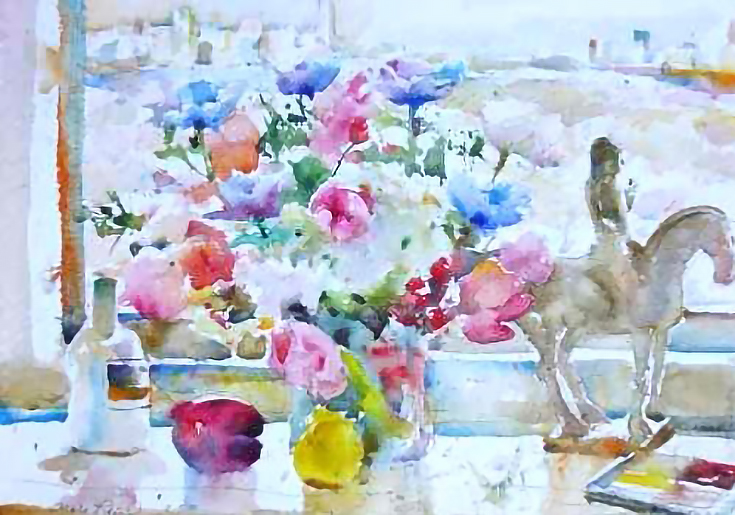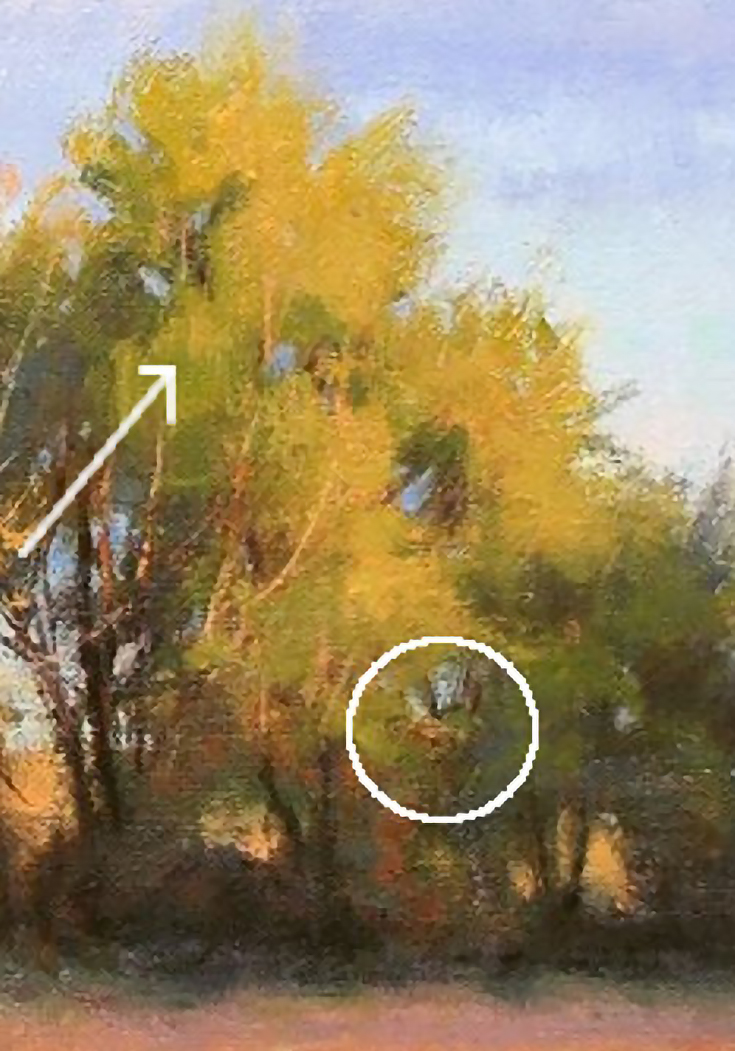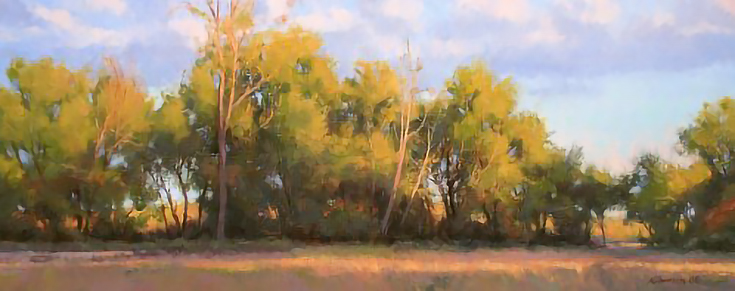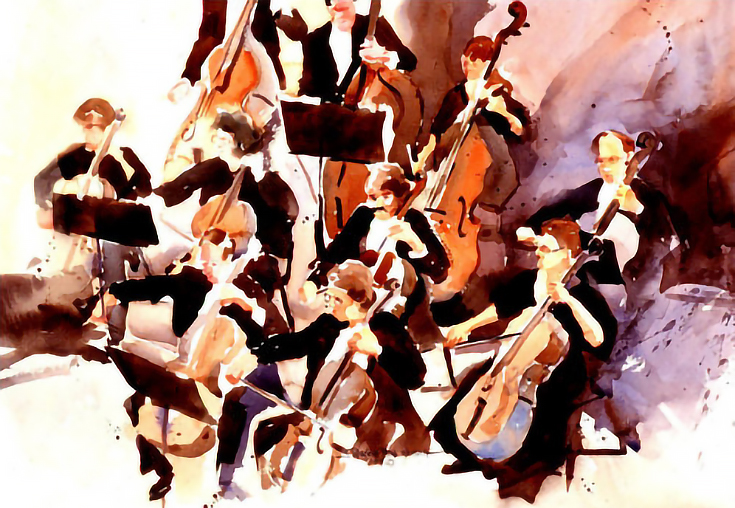Whenever movements begin to flow in a repeatable pattern, they become something more—they turn into rhythm.
Rhythm can be found in the choreography of a dance, in the painting of an artist, and of course, in songs and melodies.
In looking at music, we see all sorts of styles. Some styles are slow and mellow (like a waltz) others are quick and lively (like a tango). The one thing that all rhythms have in common, however, is repetition. Rhythms must repeat themselves.
In painting, rhythm can be created with the repetition of strokes, visual elements, or even entire subjects. . . and probably the very best example of a rhythmic visual artist is the famous action painter, Jackson Pollock.
Pollock used a bucket of paint in one hand and a brush or stick in the other. He bent over a canvas on the floor, slinging and pouring paint, often repeating the same physical motion over and over again, allowing that movement to determine where the paint fell on the canvas.
The results are a rhythmic record of his actions, photographed here by Hans Namuth.
Pollock avoided realistic images altogether in favor of simply recording actions. . . but rhythm can add depth and interest to any kind of painting, including realistic works.
Here are three tried and true strategies for creating visual rhythm:
1. Use rhythmic marks
Over the centuries, many artists have chosen to let their strokes show rather than blending them out or covering them up. In this way, the strokes themselves—repeated over and over again—form a vibrant rhythm within the art work.
Take a look for yourself, and focus on JUST the rhythm of the brushstrokes in this oil painting by Colin Page.
See how the movement of the marks pull your eyes around the painting? Now look at this watercolor piece by Charles Reid.
In each of these works of art, removing the marks made by the artist’s tool would diminish the the works overall. Just colors and values alone wouldn’t convey anywhere near the same amount of life and energy that is currently depicted.
2. Create repeating motifs
Beyond mark-making, rhythm can also come from repeating motifs. Let me explain by showing an example: below is a portion of Marc Hanson’s painting, Raking Light.
Notice the patterns that Marc used to form his trees. He used a color gradation from green to orange (the arrow) and repeatedly contrasted light and shadow (the circle).
Now look at the whole piece. That same motif is repeated across the entire canvas, creating a smooth, waltz-like rhythm.
In her watercolor, We’ve Got Rhythm, Pat Weaver implemented a similar strategy by creating a motif of contrasts within a single musician. She then repeats it throughout the painting, giving us a rather "staccato" visual rhythm.
3. Combine both marks and motifs
Why limit yourself to just one form of rhythm?
In this little acrylic painting entitled Washington Oaks State Park Palms by Linda Blondheim, there’s a combination of the repeated mark as well as the repeated motif.
Linda’s repeated brushstrokes give a lovely, intense rhythm throughout the painting—but they’re also enhanced by the repeated verticals of the palms, and the various layers of color used to define specific areas of the surrounding foliage.
By combining both forms of rhythm, her painting almost moves of its own accord when you run your eyes over it.
Think about your own art—would your style benefit from rhythmic brushstrokes or repeating motifs? If so, then try using one of these strategies in your next painting. . . the results are practically guaranteed to be exciting.
This post may contain affiliate links.
